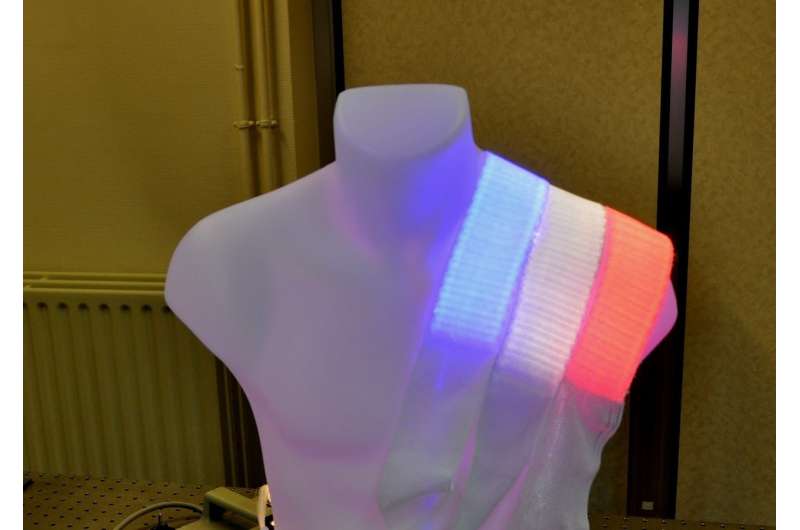Credit: PHOS-ISTOS-project
A team of researchers with Texinov Medical Textiles in France has announced that their PHOS-ISTOS system, called the Fluxmedicare, is on track to be made commercially available later this year. The system consists of a piece of fabric imbued with optical fibers and a control mechanism. The system is meant to be used for treatment of skin diseases such as acne, psoriasis and actinic keratosis.
The goal of the project was to create a flexible light-emitting textile for use in photodynamic therapy (PDT) of actinic keratoses—a skin disease characterized by rough patches. The program was initiated in response to requests by people in the medical community looking to replace traditional PDT systems—systems currently in use involve large light panels directed at patients which in addition to treating skin, cause redness and severe pain.
The new system works fundamentally the same as current systems—a cream is applied to the skin followed by treatment with light. The light speeds up a reaction between a photosensitizer in the cream and oxygen in the air. The difference is in the light source. Instead of a large panel, optical fibers knitted into a fabric emit enough light to speed up the reaction, but do so without causing pain. After the cream is applied to the skin, the fabric is placed directly on the body over the impacted area.
Fluxmedicare has been undergoing clinical trials at University Hospital, Lille France and at Klinikum Vest in Germany. Dr. Nadege Boucard, a spokesperson for the team working on the project has described it as an unprecedented system for treating skin conditions. He noted also that in addition to effectively treating a wide variety of skin ailments, the new system actually works better because of its wraparound nature. Light is emitted evenly to every part of the body, which, he pointed out, means the beams are homogeneous. A report from the clinical trial team gave an average ranking of pain for the new system of 0 to 1, which Boucard describes as a 90 percent drop. He has further noted that the cost of the system will be approximately €5,000, just a third of those now in use.
© 2018 Medical Xpress






















